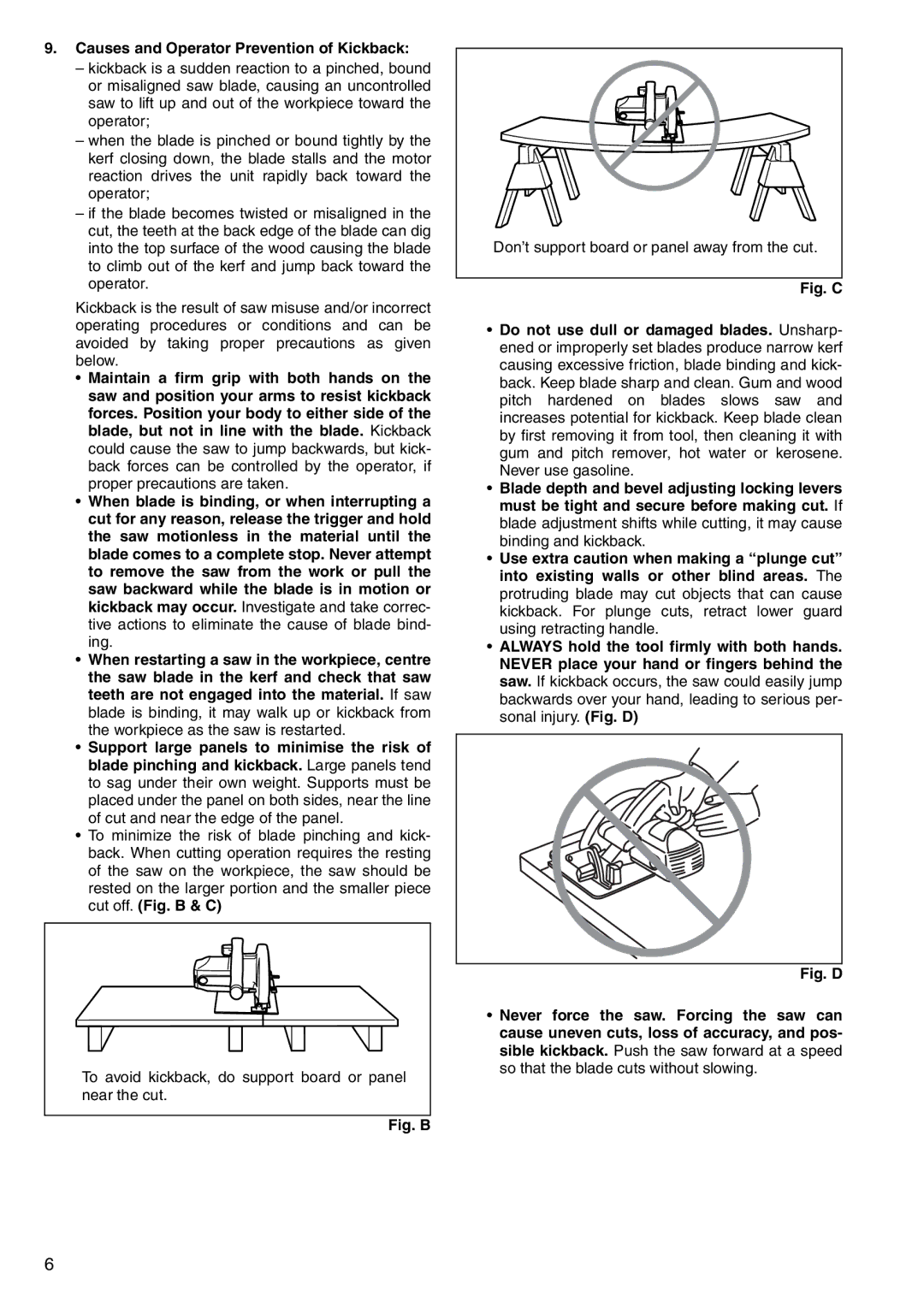5143R, 5103R, 5703R, 5903R specifications
Makita, a renowned name in power tools, offers a range of high-performance electric saws that cater to professional and DIY enthusiasts alike. Among its standout models are the Makita 5903R, 5703R, 5103R, and 5143R. Each of these saws is designed with precision, power, and efficiency in mind, making them suitable for various cutting applications.The Makita 5903R is a powerful circular saw that boasts a robust 15-amp motor, capable of delivering cutting speeds of up to 5,800 RPM. One of its main features is the ergonomically designed handle, which allows for easy maneuverability and reduced fatigue during prolonged use. The 5903R also includes a large, clear sightline for precise cutting, alongside a base that is engineered for stability. Its bevel capacity reaches up to 45 degrees, allowing for versatile cutting angles, making it ideal for framing and roofing projects.
Moving on to the Makita 5703R, this model is also equipped with a potent 15-amp motor and offers a more compact design without sacrificing power. The 5703R features a thin kerf blade that reduces friction and increases efficiency, leading to smoother cuts. Additionally, its lightweight build makes it easier to handle, particularly in tight spaces. The saw’s precision balanced design helps in minimizing user fatigue, making it a favorite for extended work sessions.
The Makita 5103R is known for its high cutting capacity and excellent cutting efficiency. This model features a 15-amp motor and a maximum cutting depth of 3-13/16 inches at 90 degrees, making it perfect for heavy-duty applications. The built-in electronic speed control maintains a constant speed under load, ensuring consistent performance. Moreover, the saw is equipped with a large in-line rear handle for added comfort and control.
Finally, the Makita 5143R is a superior circular saw designed specifically for heavy-duty applications. This model is powered by a 15-amp motor and boasts a remarkable cutting depth of 4-5/8 inches at 90 degrees, suitable for cutting through thick materials. It features a durable aluminum die-cast base for increased stability during cutting, and its advanced anti-kickback design enhances user safety. The 5143R also comes with a soft start feature, which gradually increases the speed for smoother operation.
In summary, the Makita 5903R, 5703R, 5103R, and 5143R models showcase a blend of power, precision, and user-oriented features. Whether you're framing, roofing, or tackling heavy-duty projects, these saws have the technology and characteristics to handle diverse cutting tasks efficiently.

